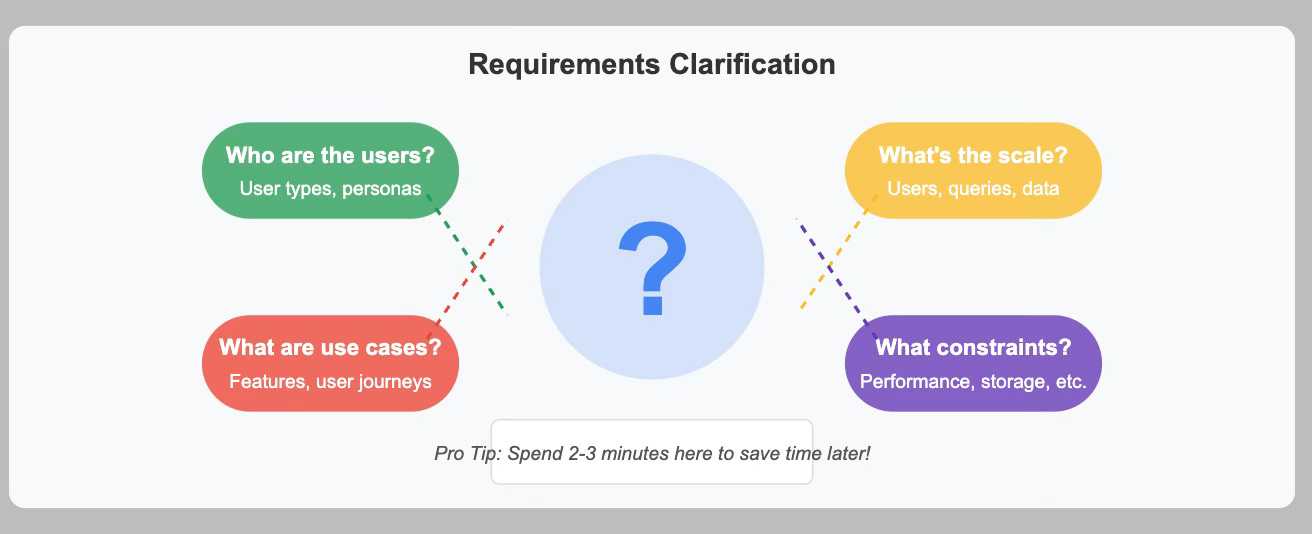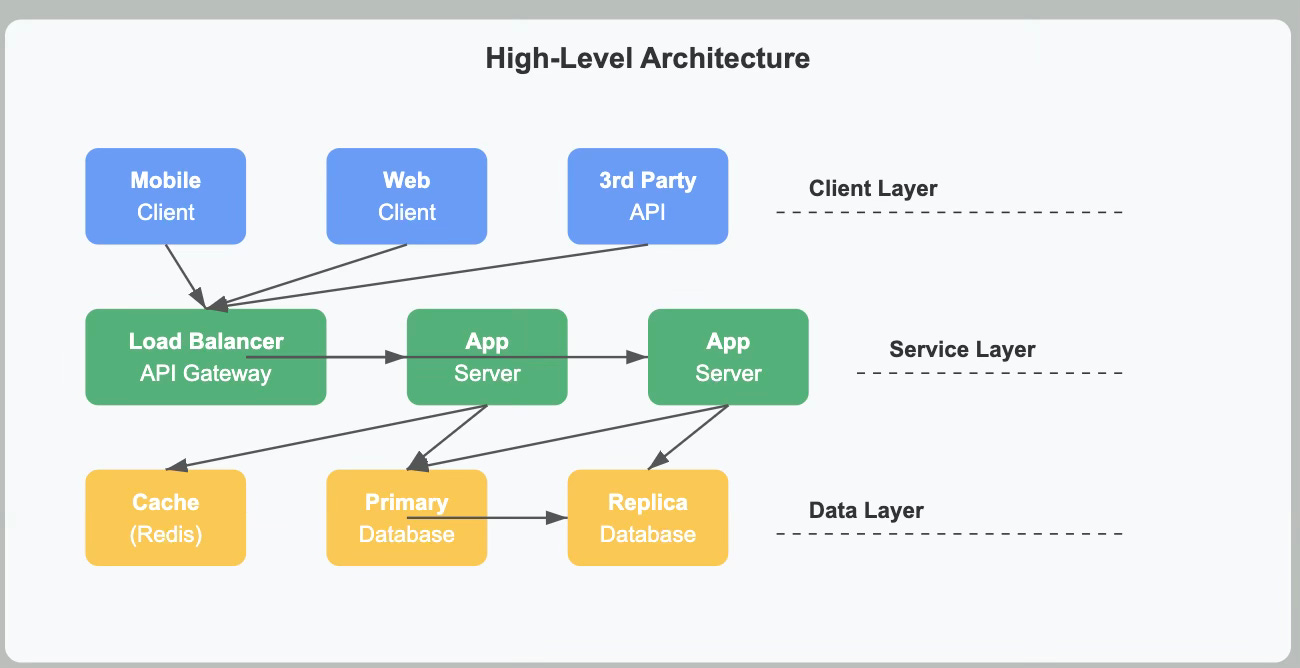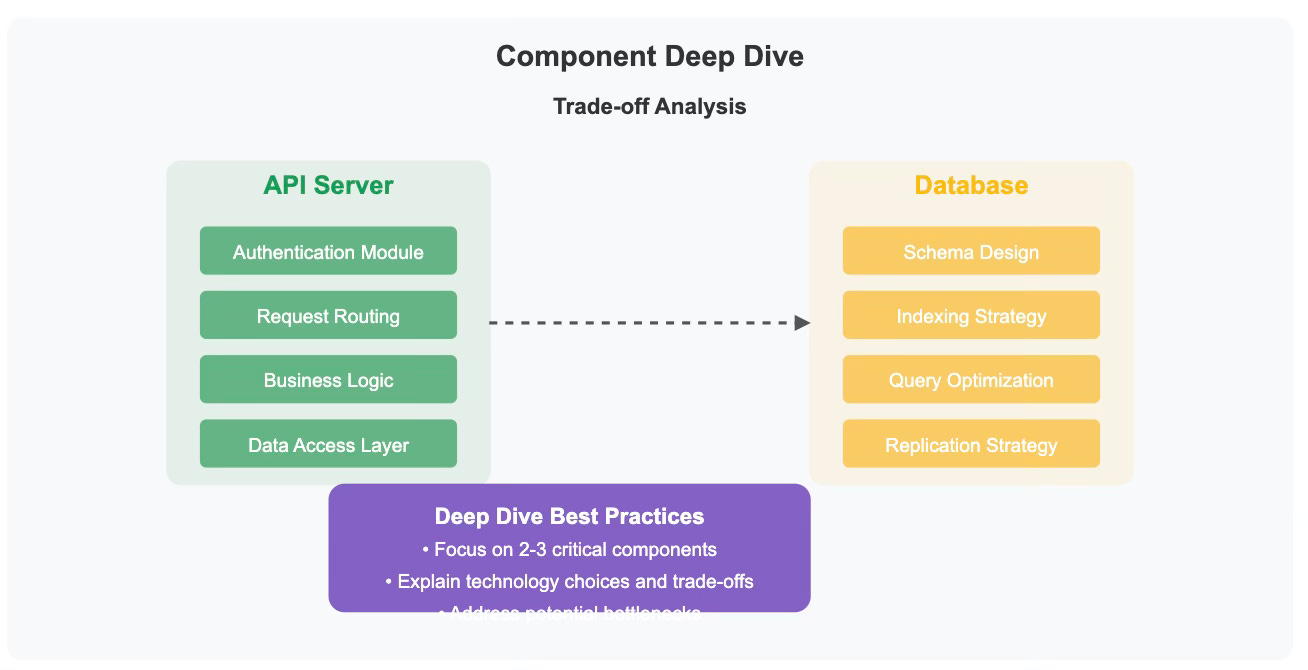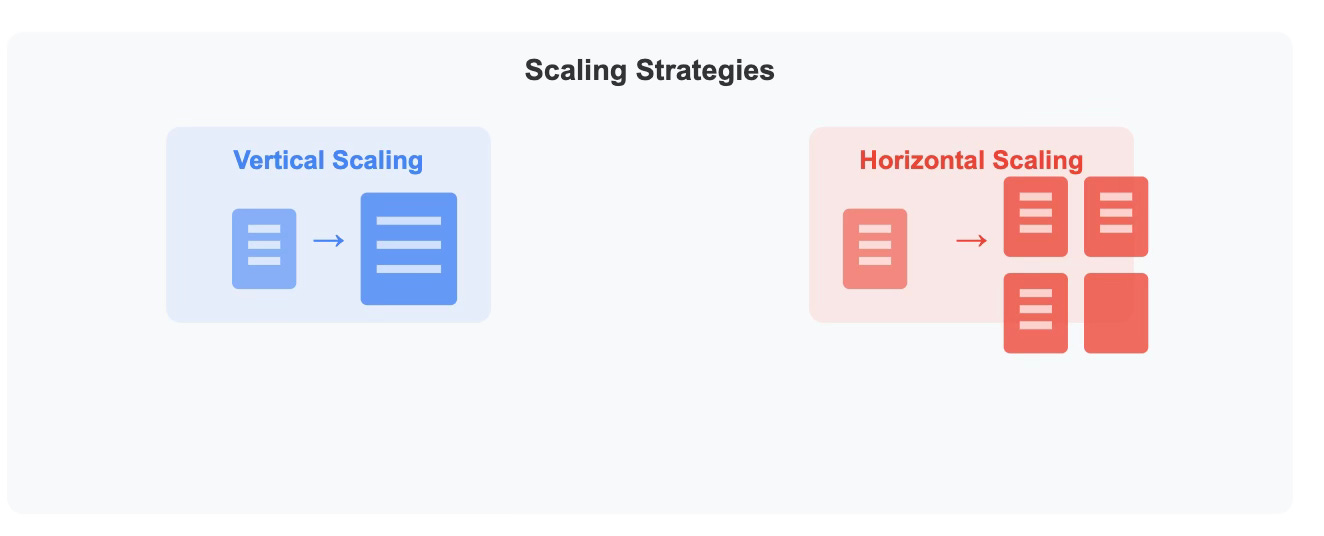What Is a System Design Interview?
A system design interview evaluates your ability to design scalable, reliable, and efficient systems that solve real-world problems. Unlike coding interviews that test algorithm skills, system design interviews assess your architectural thinking and engineering judgment.
Why This Matters
System design interviews are critical for senior roles because they:
Demonstrate your ability to make technical decisions with business impact
Show how you handle ambiguity and requirements gathering
Reveal your communication skills when discussing complex technical topics
Highlight your experience with large-scale, distributed systems
The 5-Step Interview Framework
1. Clarify Requirements (2-3 minutes)
Ask probing questions to understand scope and constraints
Identify users and their primary use cases
Establish scale (users, traffic, data volume)
Define functional and non-functional requirements
2. High-Level Design (5-10 minutes)
Sketch core components (clients, servers, databases, caches)
Define API contracts between components
Outline data models and relationships
Create a basic system flow for primary use cases
3. Deep Dive Into Components (10-15 minutes)
Select critical components to explore further
Address potential bottlenecks
Explain technology choices
Consider tradeoffs between different approaches
4. Scaling & Optimization (5-10 minutes)
Identify scaling challenges
Apply relevant patterns (sharding, replication, caching)
Address edge cases and potential failures
Consider performance optimizations
5. Wrap-Up (2-3 minutes)
Summarize your design
Acknowledge limitations
Suggest future improvements
Demonstrate understanding of evolution path
Common Pitfalls to Avoid
Starting too detailed - Begin broad, then narrow
Jumping to solutions without understanding requirements
Focusing solely on one aspect (like just the database)
Not considering scale from the beginning
Silent thinking without communicating your process
Practice Example: URL Shortener
Let's apply our framework to design a URL shortening service like bit.ly:
Requirements:
Create short URLs from long ones
Redirect users to original URL when short URL is accessed
Scale to millions of URLs
Fast response times
High-Level Design:
Web servers to handle URL creation and redirection
Database to store URL mappings
Hashing service to generate short codes
Deep Dive:
URL encoding algorithm (Base62 vs. MD5+Base62)
Database schema and indexing strategy
Caching layer for popular URLs
Scaling:
Read-heavy workload → Caching and read replicas
Database sharding based on short code
CDN for global availability
Wrap-Up:
System handles millions of URLs with sub-100ms response time
Future improvements: Analytics, custom URLs, expiration policies
Over to You
Think about a recent app you've used. How would you design its backend system? What questions would you ask first? What components would be in your high-level design?
Next week: The CAP Theorem Explained with Pizza Delivery Analogies






